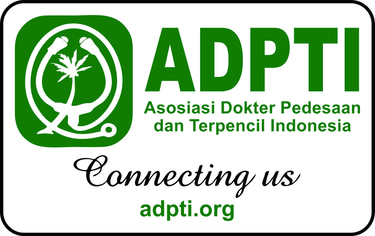Understanding Antimicrobial Resistance: Challenges and Solutions
Antimicrobial resistance (AMR) is one of the top global public health and development threats. It is estimated that bacterial AMR was directly responsible for 1.27 million global deaths in 2019 and contributed to 4.95 million deaths (WHO, 2023)
Syarhan
11/22/20243 min baca


Introduction to Antimicrobial Resistance
Antimicrobials – including antibiotics, antivirals, antifungals, and antiparasitics – are medicines used to prevent and treat infectious diseases in humans, animals and plants. Antimicrobial resistance (AMR) has emerged as one of the significant global health challenges of our time. It refers to the ability of microorganisms, such as bacteria, viruses, fungi, and parasites, to withstand the effects of medications that once effectively treated them. As a result, infections become more difficult to treat, leading to prolonged illnesses, increased healthcare costs, and a growing mortality rate.
The Causes of Antimicrobial Resistance
Several factors contribute to the rise of antimicrobial resistance. One of the primary culprits is the overuse and misuse of antibiotics in both human medicine and agriculture. When antibiotics are prescribed unnecessarily or when patients do not complete their prescribed courses, it creates an environment where resistant strains can flourish. Furthermore, the agricultural use of antibiotics in livestock contributes to the dissemination of resistant bacteria into the food chain.
Additionally, inadequate infection prevention and control measures can exacerbate the spread of AMR. This includes poor hygiene practices in healthcare settings and insufficient public awareness about the responsible use of antimicrobials. In developing countries, limited access to clean water and sanitation facilities can also facilitate the dissemination of resistant pathogens.
Impact and Global Response to Antimicrobial Resistance
The impact of antimicrobial resistance is profound and multifaceted. It not only complicates the treatment of infectious diseases but also undermines advancements in modern medicine. Surgical procedures, cancer therapies, and organ transplants all rely heavily on effective antibiotics to prevent infections. With the increase in resistant infections, the success of these interventions is jeopardized.
To combat the growing threat of AMR, a coordinated global response is essential. Initiatives such as the World Health Organization’s Global Action Plan on AMR aim to raise awareness, improve surveillance, and promote research and development of new antimicrobials. Countries are encouraged to develop national action plans that incorporate strategies to optimize the use of available antibiotics, strengthen infection prevention practices, and enhance public health infrastructure.
The misuse and overuse of antimicrobials in humans, animals and plants are the main drivers in the development of drug-resistant pathogens. AMR affects countries in all regions and at all income levels. Its drivers and consequences are exacerbated by poverty and inequality, and low- and middle-income countries are most affected. AMR puts many of the gains of modern medicine at risk. It makes infections harder to treat and makes other medical procedures and treatments – such as surgery, caesarean sections and cancer chemotherapy – much riskier. The world faces an antibiotics pipeline and access crisis. There is an inadequate research and development pipeline in the face of rising levels of resistance, and urgent need for additional measures to ensure equitable access to new and existing vaccines, diagnostics and medicines. In addition to death and disability, AMR has significant economic costs. The World Bank estimates that AMR could result in US$ 1 trillion additional healthcare costs by 2050, and US$ 1 trillion to US$ 3.4 trillion gross domestic product (GDP) losses per year by 2030. Priorities to address AMR in human health include preventing all infections, which may result in inappropriate use of antimicrobials; ensuring universal access to quality diagnosis and appropriate treatment of infections; and strategic information and innovation, for example surveillance of AMR and antimicrobial consumption/use, and research and development for novel vaccines, diagnostics and medicines (WHO, 2023)
Public engagement and education are crucial in the fight against antimicrobial resistance. Increasing awareness of the responsible use of antibiotics among both healthcare professionals and the general public can significantly reduce the unnecessary demand for these medications. Through collective efforts to promote better stewardship of existing antibiotics and invest in new treatment options, we can mitigate the impact of AMR on global health.
